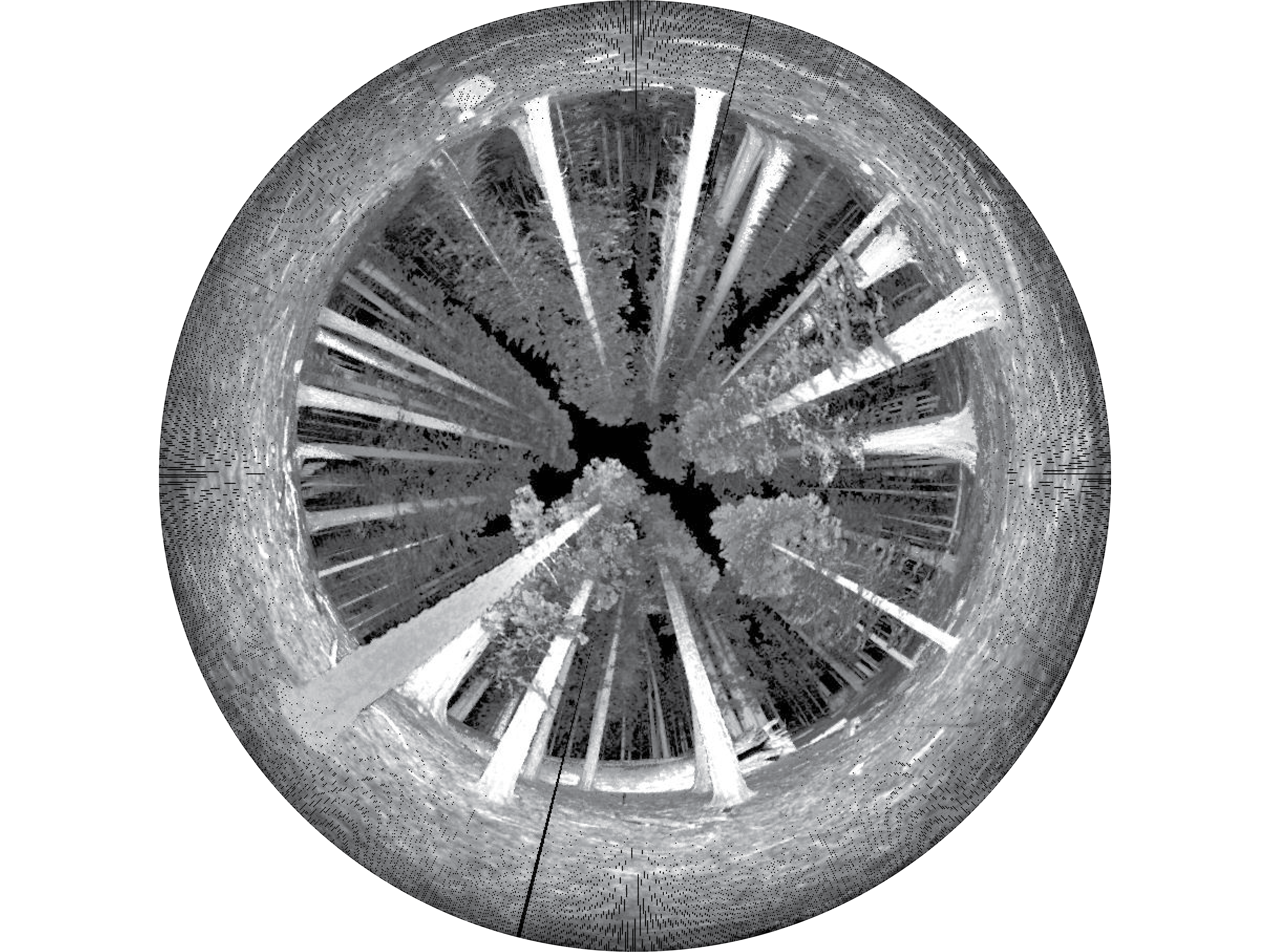Gayatri Chakravorty Spivak, Imperatives to Re-Imagine the Planet (Vienna: Passagen Verlag, 1999), 44.
Sylvia Wynter and Katherine McKittrick, “Unparalleled Catastrophe for Our Species?” in Katherine McKittrick ed., Sylvia Wynter: On Being Human as Praxis (Durham: Duke University Press, 2015), 23.
NASA Earth Observatory, “World of Change: Amazon Deforestation,” ➝.
Elizabeth Zubritsky, “New NASA Probe Will Study Earth’s Forests in 3D,” NASA Global Climate Change, ➝.
Elizabeth DeLoughrey, “Satellite Planetarity and the Ends of the Earth,” Public Culture 26, no. 2 (2014), 261.
Paul N. Edwards, A Vast Machine: Computer Models, Climate Data, and the Politics of Global Warming (Cambridge: MIT Press, 2010), 25.
Gayatri Chakravorty Spivak, Imperatives.
McKittrick, Sylvia Wynter.
Harun Farocki, “Phantom Images,” Public 29 (2004): 12–22.
Jennifer Gabrys, “Sensing an Experimental Forest: Processing Environments and Distributing Relations,” Computational Culture 2 (2012), ➝.
Spivak, Imperatives, 74.
Gayatri Chakravorty Spivak, “Planetarity” (Box 4) for “Welt,” in Dictionary of Untranslatables: A Philosophical Lexicon, ed. Barbara Cassin (Princeton University Press, 2014).
For a discussion of the unsettling of these “global-world-spaces” within this collection on Accumulation, see Kathryn Yusoff, Epochal Aesthetics: Affectual Infrastructures of the Anthropocene,” in Accumulation, Nick Axel, Daniel A. Barber, Nikolaus Hirsch, and Anton Vidokle eds. (e-flux Architecture, 2017–2018), ➝.
Gayatri Chakravorty Spivak, “Planetarity,” in Death of a Discipline (New York: Columbia University Press, 2003), 71-102.
Spivak develops and reworks the planetary and planetarity in many more texts beyond these, and this is not an exhaustive list.
Spivak, Imperatives, 54.
Spivak, Imperatives, 44.
On these different renderings of science within Aboriginal land practices, see Helen Verran, “A Postcolonial Moment in Science Studies: Alternative Firing Regimes of Environmental Scientists and Aboriginal Landowners.” Social Studies of Science 32, nos. 5-6 (2002): 729–762.
Spivak, Imperatives, 80.
Spivak, Imperatives, 48.
The concept and phrase—being planetary as praxis—that I develop here is an extension on this phrase coined by Wynter, which she further elaborates in conversation with Katherine McKittrick in the stirring collection, Sylvia Wynter: On Being Human as Praxis. McKittrick, Sylvia Wynter.
Sylvia Wynter and Katherine McKittrick, “Unparalleled Catastrophe for Our Species?” in McKittrick, Sylvia Wynter.
Wynter and McKittrick, “Unparalleled Catastrophe for Our Species?”
Wynter is influenced by Marx in her understanding of praxis, but also draws on Judith Butler in her discussion of praxis and gender, which she develops into an original take on storytelling, code, neural science and being human as praxis.
Marisol de la Cadena, “Uncommoning Nature,” e-flux Journal 65 (May–August 2015), 4.
Sylvia Wynter, “Unsettling the Coloniality of Being/Power/Truth/Freedom: Towards the Human, After Man, Its Overrepresentation—An Argument,” CR: The New Centennial Review 3, no. 3 (Fall 2003): 257–337.
Will Steffen, Johan Rockström, Katherine Richardson, Timothy M. Lenton, Carl Folke, Diana Liverman, Colin P. Summerhayes, Anthony D. Barnosky, Sarah E. Cornell, Michel Crucifix, Jonathan F. Donges, Ingo Fetzer, Steven J. Lade, Marten Scheffer, Ricarda Winkelmann, and Hans Joachim Schellnhuber, “Trajectories of the Earth System in the Anthropocene,” PNAS 115, no. 33 (August 14, 2018): 8252–8259.
Steffen et al., “Trajectories,” 8254.
Steffen et al., “Trajectories,” 8256.
Spivak, “Planetarity” (2003), 72.
Climate migration and its consequences for social and environmental justice is a topic addressed through numerous research articles and reports. For example, see Andrew Baldwin, “Racialisation and the Figure of the Climate Change Migrant,” Environment and Planning A 45, no. 6 (June 2013): 1474–1490. At the same time, this topic is the focus for security and development, as is evident through the report: Kanta Kumari Rigaud, Alex de Sherbinin, Bryan Jones, Jonas Bergmann, Viviane Clement, Kayly Ober, Jacob Schewe, Susana Adamo, Brent McCusker, Silke Heuser, and Amelia Midgley, Groundswell: Preparing for Internal Climate Migration (World Bank, Washington, DC, 2018), ➝.
Wynter and McKittrick, “Unparalleled Catastrophe,” 17. Wynter draws here on Aimé Césaire, from “Poetry and Knowledge,” in Refusal of the Shadow: Surrealism and the Caribbean, Michael Richardson ed. (New York, Verso, 1996 {1946}), 134–146.
Pascal David, “Welt” in Dictionary of Untranslatables, 1217–1224.
Alfred North Whitehead, Modes of Thought (New York: The Free Press, 1966 {1938}). This planetary approach potentially runs up against Wynter’s configuration of the subject within autopoietic systems, where subjects construct environments—unless subjects are extended to multiple other entities. This discussion of autopoiesis and subject-superjects is a topic for another study.
Walter Benjamin, “To the Planetarium,” One-Way Street, Reflections, 93.
I have previously discussed the becoming environmental of computation to consider how sensor technologies configure and distribute environmental experiences. Through this discussion, I suggest this extended encounter with the planetary, the human, and praxis could stir a different constellation of the planetary aspects of media and technology, especially as configured in relation to climate change. Jennifer Gabrys, Program Earth: Environmental Sensing Technology and the Making of a Computational Planet (Minneapolis: University of Minnesota Press, 2016).
Eduardo Kohn, How Forests Think: Towards an Anthropology beyond the Human (Berkeley: University of California Press, 2013); Eduardo Viveiros de Castro, “The Crystal Forest: Notes on the Ontology of Amazonian Spirits,” Inner Asia 9 (2007), 153–172.
